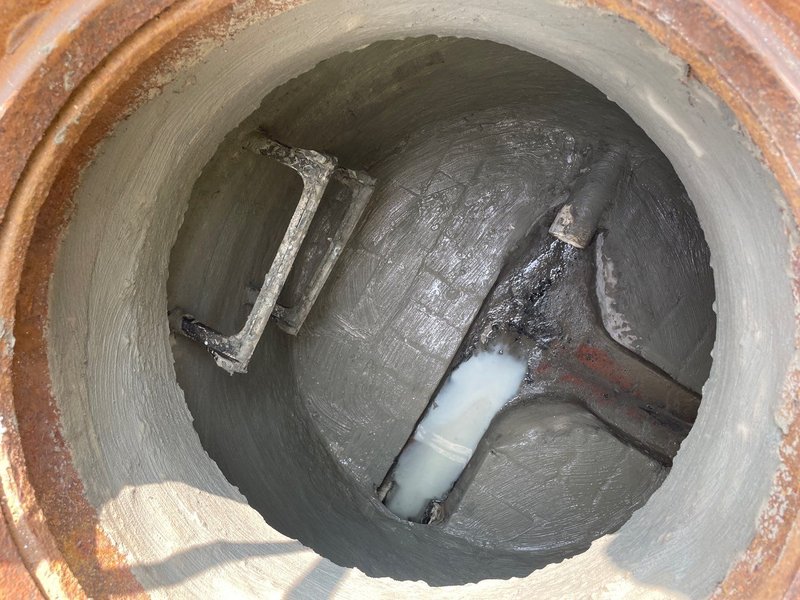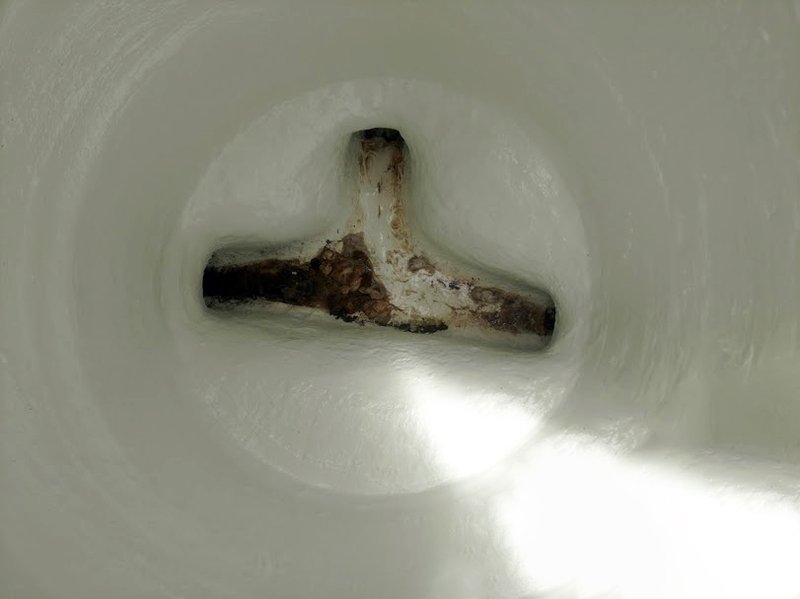Introduction to I&I
Most buried assets in the sanitary sewer collection system, such as concrete, brick, or masonry structures, act like buried high-density sponges over time. These substrates absorb water from the surrounding saturated earth, resulting in corrosion and erosion.
Most buried assets in the sanitary sewer collection system, such as concrete, brick, or masonry structures, act like buried high-density sponges over time. These substrates absorb water from the surrounding saturated earth, resulting in corrosion and erosion. Concrete and mortar contain interconnected voids and capillaries formed by air entrainment during the mixing process, allowing water to permeate through the material, increasing the asset’s susceptibility to degradation. Over time, the substrate deteriorates due to deterioration or fatigue, displaying cracks and damage (some small, some noticeable), which then allows water to be absorbed or directed from the saturated soil nearby. Assets buried within the water table then become increasingly vulnerable due to hydrostatic pressure from groundwater seepage.
The Rise of I&I Abatement Programs
The American Society of Civil Engineers (ASCE) reports that over 16,000 wastewater treatment plants in the United States operate at 81% of their design capacities, with 15% reaching or exceeding capacity. It is estimated that the US spends close to one billion dollars annually in costs related to I&I, underscoring the critical need for abatement programs and proactive asset management strategies. Adoption of these plans has seen a shift to a more proactive approach by utilities and stakeholders. The consequence of this increased strain on treatment plants heightens the risk of sanitary sewer overflow (SSO) and will necessitate construction expansion of the plant if needs are ignored.
Trenchless Approach to Providing A Targeted Solution
Selecting the best products and solutions starts with identifying the origins of I&I and pinpointing problematic zones – while understanding the factors contributing to the I&I condition. Is the I&I predominantly entering via manholes, pipes, pumping stations, or a mix? Acknowledging that each sewer line may demand a distinct approach ensures that the selected solutions harmonize with the system’s unique requirements.
Trenchless technologies offer innovative solutions to mitigate I&I without extensive infrastructure replacements. These methods incorporate advanced and validated lining techniques that offer effective solutions for meeting both EPA regulations and municipal I&I reduction objectives. Additionally, trenchless technologies offer cost-effective and sustainable solutions for addressing I&I while minimizing disruptions to communities.
Solutions for vertical structures like manholes should be carefully chosen based on factors like environment and severity of I&I, with consultation from an experienced professional.
Condition Assessment
When dealing with I&I, the first crucial step is a comprehensive condition assessment to understand the impact of corrosion and leaks. This assessment is essential for proactive I&I abatement or reacting to mandates like EPA consent decrees. Effective planning and execution depend on collecting relevant data, understanding which assets contribute most to I&I, understanding why they occur, and anticipating future challenges. Organizations like WEF, AWWA, NASTT, NASSCO, EPA, AASHTO, and AMPP provide guidance on I&I and trenchless lining options, including standards and education. After assessment, a plan can be formulated to target specific structures.
Distinctions in Underground Buried Assets
In assessing buried collection lining systems, two primary asset categories should be considered: horizontal pipe systems and vertical assets such as manholes and pump stations. Each category undergoes distinct forces and stresses, often necessitating different technologies and performance
criteria. Variations in technologies, specifications, surface preparation standards, contractor qualifications, and execution may arise, particularly when comparing horizontal pipelining with vertical structures (manhole and lift station) lining.
Attributes of a Fully Sealed Monolithic I&I Solution
When selecting vertical lining technologies requiring a fully sealed monolithic solution from manhole to
manhole, consider the following key attributes:
- Adhesion to Various Construction Materials
- High Film Thickness
- High Flexural and Tensile Strengths
- Vacuum Test Compatibility
- H2S Resistance, Repairability, and Maintainability
- High Bond Strength with Zero Annulus Design Intention
- Resistance to Root Intrusion, Hydrostatic Pressure, and Water Infiltration

Benefits of Applied & Bonded, Ultra-high Build, High Strength Epoxies
Bonded high-strength and high-build epoxies offer superior advantages over other solutions for addressing I&I in manhole structures. The use of structural epoxies is pivotal in enabling these systems to deliver durable, long-lasting, and structurally robust solutions in demanding, ever-changing environments.
The benefits include, but are not limited to:
- Zero Annulus Design
- Versatility in Tie-In
- Easy to Maintain and Repair
- High Surface Tolerance
- Good “Wet” (SSD) Adhesion
- High Flexural and Tensile Strengths

How to Purchase
Ready to Order Tnemec?
We're ready to help. Click below to learn more about our purchasing process.
Contact Your Rep
Looking for Some Local Coatings Guidance?
Reach out to one of our knowledgable and reliable representatives near you.
E-News
Coating News Direct to Your Inbox
Stay informed about industry news and innovative coating products via email.